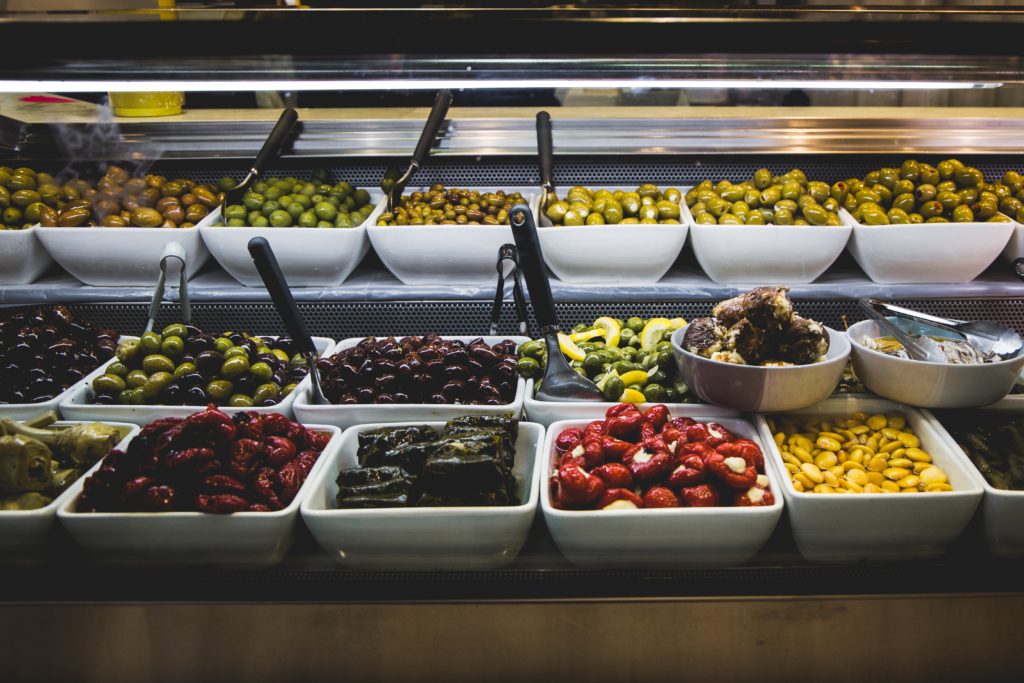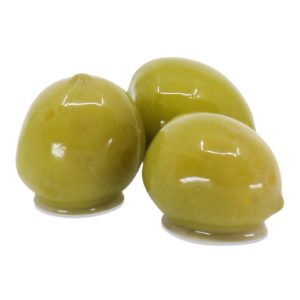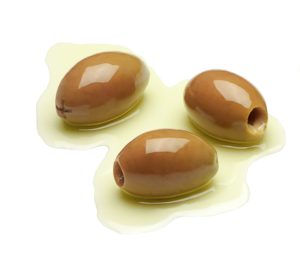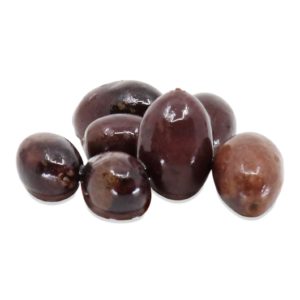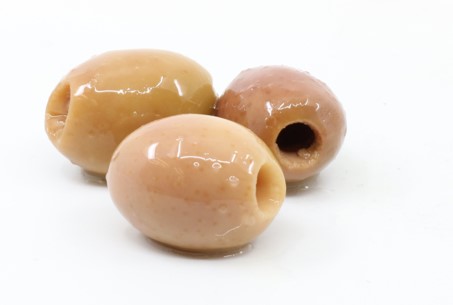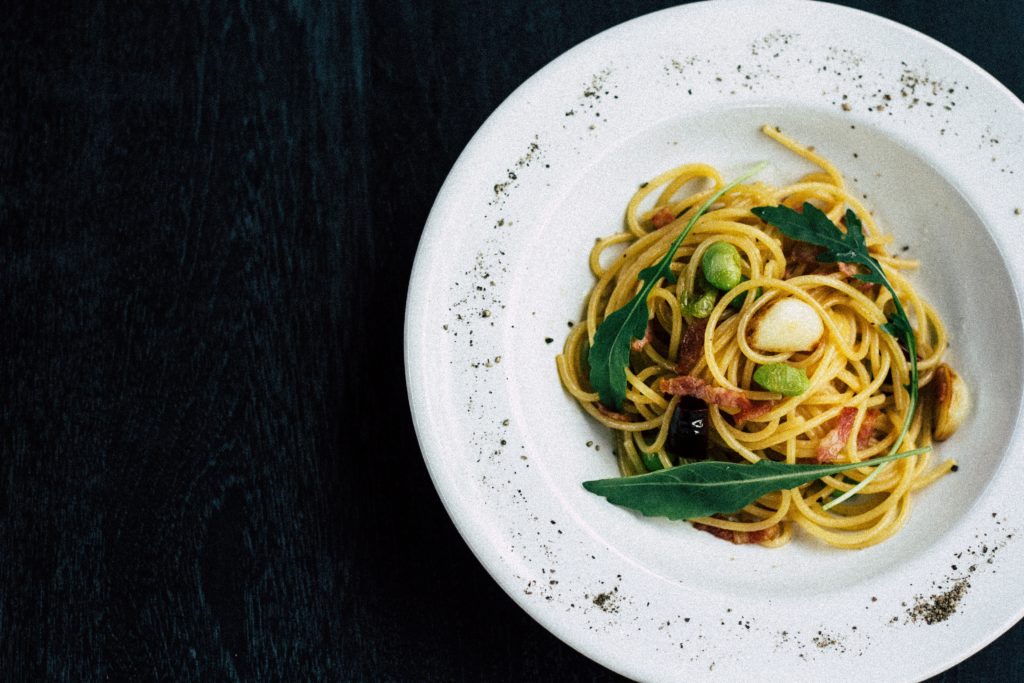Once upon a time, table olives in the United States were synonymous with sad pizza toppers. All of that changed when the Mediterranean diet craze hit the U.S. in the 1980s. Seemingly overnight, table olives became a trendy and expansive food category. Since then, olive bars have become a common sight in retailers across the country – featuring not only olives, but other antipasti specialties, such as stuffed cherry peppers, marinated feta, and more.
How can we bring excitement in this workhorse category?
1) EDUCATION IS KEY.
If a customer were to ask you how olives are cured, would you know the answer? An olive’s color reflects how ripe it is. Green olives are typically not quite ripe – they are often picked in September or October; darker olives, which range from light purple to black, are picked when ripe, from November to January. Olives right off the tree (even ripe ones) are very firm and bitter, due to a compound called oleuropein. The goal of curing is to soften the olive and leech out its bitterness. There are four main curing methods:
Water & Brine Curing:

This very traditional method involves soaking the just-picked olives in vats of water, or salty brine. The liquid is changed on a regular basis, until the olives are crisp-tender & no longer bitter. The process can take up to 12 months, during which time the olives undergo a lactic acid fermentation. Spices and flavorings can be added to the brine – for example, the delicious Kalamata olives owe their winey flavor to the addition of red wine vinegar to their brine!
Lye Curing:

Lye curing is a more recent invention, during which the olives are soaked in a lye solution. Lye is extremely strong and makes quick work of softening the olives and breaking down the bitter compounds they contain. This method is typically used on commercial olives such as ripe black olives.
Dry Curing:

You might hear dry curing referred to as “oil-curing” … and yet oil only comes into play during the last step of this traditional process. Dry-cured olives are massaged with salt and left to dry for several weeks. The salt leeches out the olives’ moisture, and much of their bitterness. The olives are then rinsed and rubbed with olive oil to further soften them. Dry-Cured olives are very popular in North Africa, and are easily be recognized by their soft, wrinkled flesh and powerful flavor.
2) DIVERSITY IN CHOICE.
There are hundreds of different types of olives, and truly infinite ways to make them unique (Spices! Vinegars! Stuffings!). Customers are now attuned to seeing a dozen or so varieties in their local supermarkets. Offering a diverse selection of olives is key to pulling customers towards your olive bar – think vibrant red Cerignolas, spring-green Castelvetranos, festive red-and-green Piquillo pepper-stuffed olives. Now there’s a feast for the eyes. Musco Food offers more than 40 varieties of olives – while we can’t list them all, here are a few of our favorites.
Castelvetrano: the coolest kid on the block. Celebrated by Bon Appetit magazine as “the Best Olives, Hands Down” these bright green olives offer a crisp texture and a wonderfully buttery, mild flavor. Hailing from the province of Trapani, in Sicily, they make the perfect elevated snacking olive, but are just as delicious chopped and tossed into cooked dishes such as white-wine braised chicken.
Atlas Olives:
Now that’s an attention grabber! Atlas olives are made by our friends, Iliada, in Greece. Atlas Olives are some of the largest you’ll find on the market – larger even than their Italian relatives, the Cerignolas. Crisp and extra-meaty, they deliver a pleasant zingy flavor with a touch of bitterness. Their sheer size is sure to wow customers, who often like to think bigger is better.
Taggiasca
Small but mighty, Taggiasca olives are little flavor bombs. Hailing from Liguria, they have a velvety, meaty flesh with a striking fruity flavor. Ranging from dark brown to green-brown, they are the Italian counterpart to the famous Niçoise olive. We love them for snacking, and even more for cooking. They are perfect additions for light, citrusy salads (fennel, orange & feta), or seafood dishes (charred octopus salad anyone?).
Domat
Domat olives are crisp-tender and intensely flavored, with a lovely zippy aftertaste. Their assertive flavor makes them the perfect mix-in with sweeter olives such as Cerignolas. Domat olives hail from Turkey, where they are often eaten at breakfast with soothing yogurt and fluffy bread. While we love them for their flavor, we can’t lie – the looks count here. These pale green olives are touched by a beautiful blush of pink. A stunner!
3) PRESENTATION
A colorful olive bar is a must – and quite easy to achieve with a dozen or so varieties. Pre-made mixes are also a convenient solution to liven up your display, and are cost-competitive thanks to thoughtful ratios of premium and more affordable olives.
Make sure to keep your olives well hydrated, either in the brine they came in, or in soy or corn oil for a beautiful shine. Carefully stir the olives on a regular basis, for an enhanced look and superior fresh flavor. And of course, care and proper hygiene is paramount when emptying pails in your olive bar.
Finally, information-rich shelf talkers describing the origin of the olive and its taste profile also encourage customers to try new varieties. A stand-up laminated flyer listing tips & recipes also makes for a great addition, as do food media articles describing the benefits of olives. Hot tip – we can provide you with all of that!
4) CROSS-MERCHANDISING
Olives can be used in countless ways. Encourage your customers to use them for more than snacking or cheese boards! Here are just a few merchandising ideas …
- Pile shelf-stable cheese, crackers and dried fruit next to your olive section and organize a cheese board contest. Instagram is a great medium – set up a hashtag, a couple of rules, and encourage your customers to share their beautiful creations.
- Set up a table with Pasta, Anchovies, Capers, Tomatoes and Pecorino Romano and print out recipe cards for Putanesca Sauce – just don’t forget to mention your shoppers will need black olives for that briny kick!
- Set up a demo table with assorted home-made tapenades: who doesn’t love a good dip? We’re partial to this fantastic recipe: https://www.bonappetit.com/recipe/green-olive-tapenade

